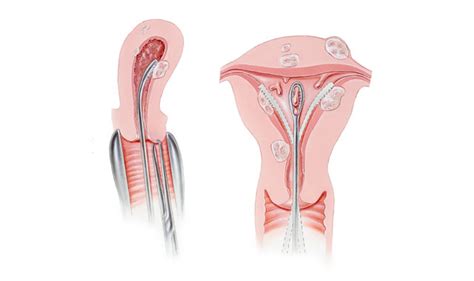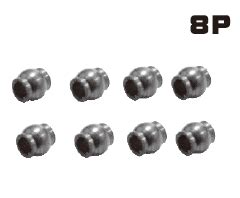Intro
Discover the link between D&C and pregnancy, including risks, effects on fertility, and emotional recovery, to make informed decisions about dilation and curettage procedures during pregnancy.
Dilation and curettage, commonly referred to as D&C, is a medical procedure that involves the dilation of the cervix to remove tissue from inside the uterus. This procedure is often performed to diagnose and treat various conditions, including heavy bleeding, miscarriage, and abortion. For women who are pregnant or planning to become pregnant, understanding the relationship between D&C and pregnancy is crucial.
The D&C procedure can have significant implications for women who are pregnant or wish to conceive in the future. In some cases, a D&C may be necessary to remove tissue from a miscarriage or to treat conditions that could affect fertility. However, the procedure can also pose risks, such as infection, scarring, and potential complications in future pregnancies.
It is essential for women to discuss their options and the potential risks and benefits of a D&C with their healthcare provider, especially if they are pregnant or planning to become pregnant. By understanding the procedure and its implications, women can make informed decisions about their reproductive health and take steps to minimize potential risks.
D&C Procedure and Pregnancy

The D&C procedure typically involves several steps, including dilation of the cervix, insertion of a curette (a spoon-shaped instrument), and removal of tissue from the uterus. The procedure can be performed under local or general anesthesia, depending on the individual case. For pregnant women, the D&C procedure may be necessary to remove tissue from a miscarriage or to treat conditions that could affect the pregnancy.
However, the procedure can also pose risks, such as infection, scarring, and potential complications in future pregnancies. Women who have undergone a D&C may experience cramping, bleeding, and spotting after the procedure, which can be managed with pain medication and rest.
It is essential for women to follow their healthcare provider's instructions after a D&C to minimize the risk of complications and promote healing. This may include avoiding heavy lifting, strenuous activities, and sexual intercourse for several weeks after the procedure.
Risks and Complications of D&C During Pregnancy
The risks and complications associated with D&C during pregnancy can be significant. Some potential risks include: * Infection: Bacteria can enter the uterus during the procedure, leading to infection and potentially serious complications. * Scarring: The D&C procedure can cause scarring in the uterus, which can increase the risk of complications in future pregnancies. * Miscarriage: The procedure can cause a miscarriage, especially if the pregnancy is not yet viable. * Preterm labor: The procedure can stimulate the uterus and cause preterm labor. * Placental abruption: The procedure can cause the placenta to separate from the uterus, which can lead to serious complications.Women who are pregnant or planning to become pregnant should discuss these risks with their healthcare provider and carefully consider their options before undergoing a D&C.
Benefits of D&C for Pregnancy

While the D&C procedure can pose risks, it can also offer several benefits for pregnant women. Some potential benefits include:
- Diagnosis and treatment of conditions: The D&C procedure can help diagnose and treat conditions that could affect the pregnancy, such as heavy bleeding or miscarriage.
- Removal of tissue: The procedure can remove tissue from a miscarriage or abortion, which can help prevent infection and promote healing.
- Reduction of bleeding: The procedure can help reduce heavy bleeding, which can be a significant problem during pregnancy.
- Improvement of fertility: The procedure can help improve fertility by removing scar tissue and other obstacles that can prevent pregnancy.
Women who are pregnant or planning to become pregnant should discuss these benefits with their healthcare provider and carefully consider their options before undergoing a D&C.
Recovery and Aftercare
After a D&C procedure, women can expect to experience some discomfort, cramping, and bleeding. To promote healing and minimize the risk of complications, women should follow their healthcare provider's instructions, which may include: * Resting and avoiding strenuous activities * Taking pain medication as directed * Avoiding heavy lifting and bending * Avoiding sexual intercourse for several weeks * Following a healthy diet and staying hydratedWomen should also attend follow-up appointments with their healthcare provider to monitor their healing and address any concerns or complications that may arise.
D&C and Future Pregnancies

The D&C procedure can have implications for future pregnancies. Women who have undergone a D&C may be at increased risk of complications, such as:
- Miscarriage: Women who have had a D&C may be at increased risk of miscarriage in future pregnancies.
- Preterm labor: Women who have had a D&C may be at increased risk of preterm labor in future pregnancies.
- Placental abruption: Women who have had a D&C may be at increased risk of placental abruption in future pregnancies.
However, many women who have undergone a D&C go on to have healthy, successful pregnancies. Women who are planning to become pregnant after a D&C should discuss their options and the potential risks with their healthcare provider.
Minimizing Risks
To minimize the risks associated with D&C and future pregnancies, women can take several steps: * Follow their healthcare provider's instructions after the procedure * Attend follow-up appointments to monitor their healing * Practice good reproductive health, including using birth control and getting regular check-ups * Maintain a healthy lifestyle, including a balanced diet and regular exerciseBy taking these steps, women can reduce their risk of complications and promote healthy outcomes in future pregnancies.
Alternatives to D&C

In some cases, women may have alternatives to D&C, such as:
- Medical management: Women may be able to manage their symptoms with medication, rather than undergoing a D&C.
- Expectant management: Women may be able to wait and see if their body will naturally expel the tissue, rather than undergoing a D&C.
- Surgical alternatives: Women may be able to undergo a different surgical procedure, such as a hysterectomy or a myomectomy.
Women should discuss these alternatives with their healthcare provider to determine the best course of treatment for their individual situation.
Conclusion and Next Steps
In conclusion, the D&C procedure can have significant implications for women who are pregnant or planning to become pregnant. While the procedure can pose risks, it can also offer several benefits, including diagnosis and treatment of conditions, removal of tissue, reduction of bleeding, and improvement of fertility.To minimize the risks associated with D&C and promote healthy outcomes, women should follow their healthcare provider's instructions, attend follow-up appointments, and practice good reproductive health. Women who are planning to become pregnant after a D&C should discuss their options and the potential risks with their healthcare provider.
We invite you to share your thoughts and experiences with D&C and pregnancy in the comments below. If you have any questions or concerns, please do not hesitate to reach out to your healthcare provider.
What is a D&C procedure?
+A D&C procedure, or dilation and curettage, is a medical procedure that involves the dilation of the cervix to remove tissue from inside the uterus.
What are the risks and complications of D&C during pregnancy?
+The risks and complications associated with D&C during pregnancy can include infection, scarring, miscarriage, preterm labor, and placental abruption.
Can I get pregnant after a D&C procedure?
+Yes, many women are able to get pregnant after a D&C procedure. However, the procedure can pose risks, such as scarring and infection, which can affect fertility.
